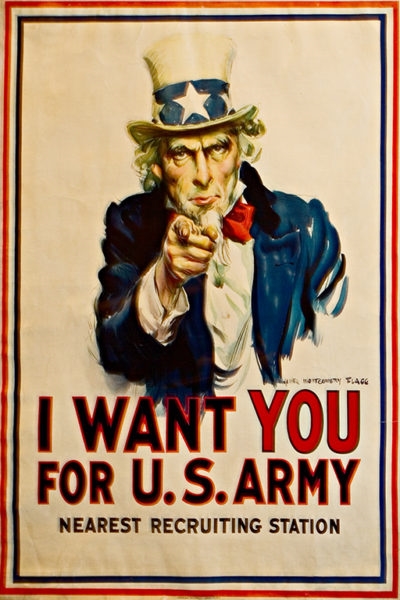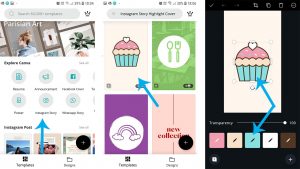— August 11, 2017

Most of us are familiar with wartime propaganda art–those WWII-era posters with brightly colored slogans like, “I want YOU for the US Army” and “Smack ’em down! Fly with the US Marines!” But if you’re writing sales emails on a regular basis, these should be much more to you than just pieces of art history or kitschy decor. They’re examples of “calls to action” that can help you write more persuasive copy and compel buyers to respond.
All those simple slogans inspired countless men and women to join the war effort. But imagine if, instead of “Smack ’em down,” the poster said, “By joining the Marines, you’d be doing your country a great service. Come discuss it with us sometime or check out one of our lectures in the town square, if that’s easier or more convenient for you!”
No one would have paid attention or even finished reading the message.
Sales deals may not be the equivalent of a war (most of the time), but you’re still aiming for a victory (closing a deal), and you still have to inspire the people you’re trying to attract. That’s why it’s crucial that the last sentence of a sales email (the call to action) is crisp, concise, and catchy enough to convince buyers they have a strong reason to respond. Otherwise, no one will listen to what you have to say.
Here are three of the most common mistakes that people make in their email calls to action:
1. Making Yourself the Center of the Action
Cold emails should be about the buyer, not the seller. That applies to the call to action as much as it does to the body text. Something like, “I think you will appreciate my product’s amazing features. I’m free on Friday if you have 15 minutes so I can share them” just tells potential customers that your agenda is the priority here—your schedule, your opinion about the product.
Focus instead on providing an incentive for them to act. Replace the features you think are cool with benefits your potential customer actually needs. Count up the number of times “I” or “me” shows up in the text, then obliterate most, if not all, of them. And if your action is time-specific, like a call or a meeting, frame it around their schedule, not yours. “When do you have 15 minutes to learn how {!Product} can save you time by automating HR tasks?”
2. Confusing People With Too Many Options
I sometimes see calls to action that are almost as long as the body of the email:
Our service would really benefit your company and I’d like to personally walk you through it. Let’s talk soon. In the meantime, you can preview our services with this video.
Giving people multiple options only confuses them and leads to inaction. What, exactly, is the sender asking them to do in the above text? Book a meeting? Watch the video? Both? No one will pause long enough to find out.
To avoid being the digital equivalent of the poster no one notices, limit yourself to one clear and persuasive call to action per email. Make sure your ask is as simple and straightforward as possible.
For example: “When are you free to discuss improving your response rate by 20%?”
See how much clearer and easier it is to act on that than on the former request?
3. Boring People With Vague Requests
Cold emails need to be as specific as possible, right down to the call to action. Make sure your messages include actual questions, not just bland statements like, “Let me know what you think.” Also, avoid questions that can be answered with “yes” or “no”—recipients will feel more motivated to write back when they have to think about an answer.
If you’ve done your research, you’ll have tailored your emails for a specific buyer or type of buyer. So don’t use the call to action to ask them to direct you to the right person, or to tell them to talk to someone else within your company.
A final note: Never skip the call to action. Your potential customers are undoubtedly busy decision-makers weighted down by hectic schedules. The value of doing business with your company might be career-changing, but that won’t matter if your ask is too ambiguous. Keep it short and simple and A/B test different types of calls to action to assess what works and improve what doesn’t. If you’re in doubt, peruse through some old wartime posters for a little extra inspiration.
Digital & Social Articles on Business 2 Community
(26)





